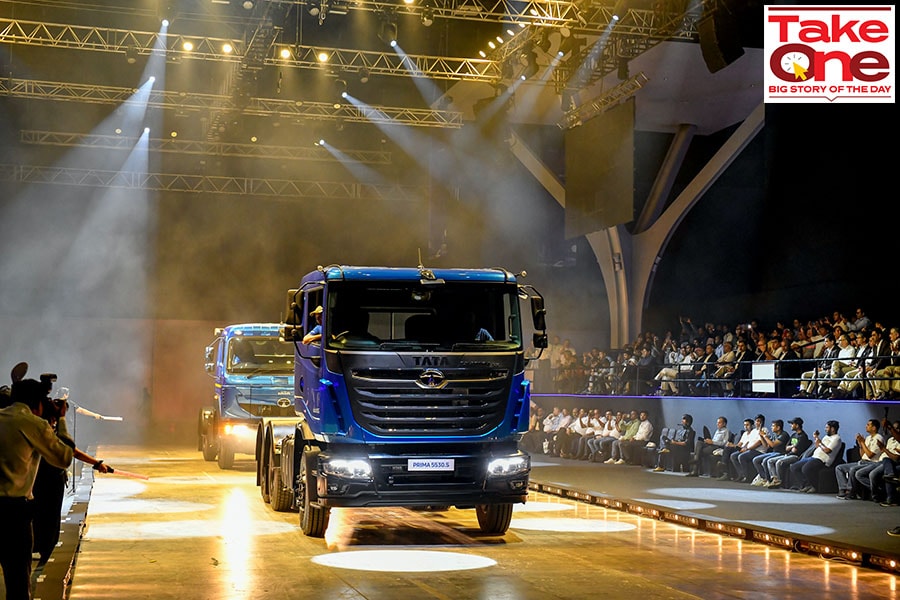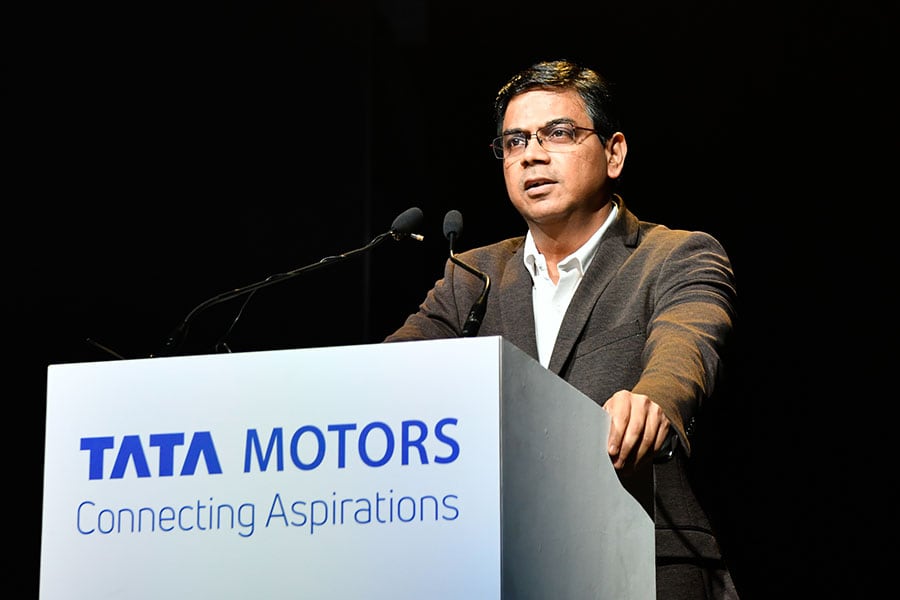
Not just cars, Tata Motors wants to change the way its trucks and buses move too
The company, which corners a little over 80 percent of India's electric mobility market and has scripted a success story in passenger vehicles, is looking to turn over a new leaf in its commercial vehicle division
 About a decade ago, Tata Motors cornered around 55 percent of the commercial vehicle segment, a number which has since fallen to about 45 percent and Tata reckons that a focus on profitable growth will also play a significant role in winning back the market
About a decade ago, Tata Motors cornered around 55 percent of the commercial vehicle segment, a number which has since fallen to about 45 percent and Tata reckons that a focus on profitable growth will also play a significant role in winning back the market
For a few years now, Tata Motors has made a habit of reinventing itself. Its passenger cars have shed its reputation as a fleet taxi operator and instead turned to offering chic models featuring advanced safety features, helping the carmaker emerge as the country’s third largest carmaker. Then, even as it transitioned into a force to reckon with, the makers of the Jaguar Land Rower also embraced electric transformation rather early on, and now corner a little over 80 percent of India’s electric vehicle market.
Last year, the company turned its electric vehicle arm into India’s most valuable electric vehicle company with a valuation of $9.1 billion, until Mahindra too stepped into the game with a similar valuation for an EV arm. All that’s probably why, in a two-year period, between March 2020 and September 2022, the market capitalisation of Tata Motors grew six-fold from nearly Rs23,000 crore in March 2020 to over Rs151,000 crore in September this year.
Now, as it cements its role in India’s passenger vehicle ecosystem, the automaker is also busy looking to turn over a new leaf in its commercial vehicle division, where it has seen its market share decline by some 10 percent in a decade. In early September, the automaker launched a slew of trucks with features often found in some premium cars in the country including Advanced Driver Assistance System (ADAS), Driver Monitoring System (DMS), Electronic Stability Control (ESC), Tyre Pressure Monitoring System and the country’s first CNG [Compressed Natural Gas] powered medium and heavy commercial vehicle.
“The way it appears is that the price differential between CNG and diesel will remain, which means that CNG will always have that total cost of ownership benefit,” Girish Wagh, executive director at Tata Motors says. “The second, issue, which comes in the mind, is range anxiety and we addressed that by giving a higher range. We have variants from 500 kilometres to 1000 kilometres range.”









